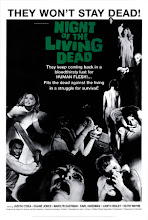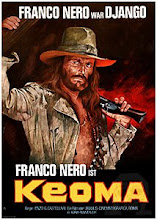 Crypt Of Horror
Crypt Of Horroraka La Cripta E L'Incubo, Terror In The Crypt, Crypt Of The Vampire
Director “Thomas Miller”/Camillo Mastrocinque Writers “Julian Berry”/Ernesto Gastaldi, María del Carmen Martínez Román, José Luis Monter, “Robert Bohr”/Bruno Valeri, Tonino Valerii
Cast Christopher Lee (Count Ludwig Karnstein), “Audry Amber”/Adriana Ambesi (Laura), Ursula Davis (Lyuba), José Campos (Friedrich Klaus)
 First tonight in our Spanish fright feast is an early gothic horror from 1964, reportedly based on Irish writer J. Sheridan Le Fanu’s classic story of vampiric eroticism, “Camilla”. Predating and no doubt inspiring Bram Stoker’s more famous Dracula, Le Fanu’s novella provided the back story to Roger Vadim’s classic from 1960, Blood And Roses, and was almost flogged to death in early Seventies in a series of increasingly graphic lesbian themed horror films (The Blood-Splattered Bride, The Vampire Lovers, Lust For A Vampire…).
First tonight in our Spanish fright feast is an early gothic horror from 1964, reportedly based on Irish writer J. Sheridan Le Fanu’s classic story of vampiric eroticism, “Camilla”. Predating and no doubt inspiring Bram Stoker’s more famous Dracula, Le Fanu’s novella provided the back story to Roger Vadim’s classic from 1960, Blood And Roses, and was almost flogged to death in early Seventies in a series of increasingly graphic lesbian themed horror films (The Blood-Splattered Bride, The Vampire Lovers, Lust For A Vampire…).
 But this is 1964, and things are a little more downplayed. Take, for instance, the presence of Christopher Lee, a formidable presence in British horror films at the time, but here strangely downbeat – in fact the most animated thing about him is his smoking jacket. Lee plays Count Ludwig Karnstein, a morose patriarch who sends for a young researcher Friedrich Klaus to investigate his family’s 200 year old curse. Karnstein’s daughter Laura, it seems, is haunted by visions of murdering her family one by one, and in one moment channels the voice of Sira, a witch crucified by the Karnsteins 200 years before, with the help of the family’s Satanic housecrone Rowena. Friedrich takes a keen interest in the seemingly doomed Laura, but any chance of romance is dashed with the arrival of a young girl named Lubya, rescued from a carriage accident, who becomes Laura’s new plaything and seems, after the appearance of two puncture wounds on her neck, to be in the hold of a force much more powerful than Laura.
But this is 1964, and things are a little more downplayed. Take, for instance, the presence of Christopher Lee, a formidable presence in British horror films at the time, but here strangely downbeat – in fact the most animated thing about him is his smoking jacket. Lee plays Count Ludwig Karnstein, a morose patriarch who sends for a young researcher Friedrich Klaus to investigate his family’s 200 year old curse. Karnstein’s daughter Laura, it seems, is haunted by visions of murdering her family one by one, and in one moment channels the voice of Sira, a witch crucified by the Karnsteins 200 years before, with the help of the family’s Satanic housecrone Rowena. Friedrich takes a keen interest in the seemingly doomed Laura, but any chance of romance is dashed with the arrival of a young girl named Lubya, rescued from a carriage accident, who becomes Laura’s new plaything and seems, after the appearance of two puncture wounds on her neck, to be in the hold of a force much more powerful than Laura.
 The mystery deepens with the appearance of a twisted, seemingly ageless and strangely well-informed old beggar who serves as a hunchbacked Greek chorus, announcing portends of doom such as “Beauty carries the seeds of misfortune.” Is he referring to Laura, Lyuba, or the Count’s hateful blonde consort Annette? Is someone trying to drive Laura mad, or is she really the reincarnation of the vengeful witch Sira, fulfilling her prophecy to destroy the Karnsteins from within?
The mystery deepens with the appearance of a twisted, seemingly ageless and strangely well-informed old beggar who serves as a hunchbacked Greek chorus, announcing portends of doom such as “Beauty carries the seeds of misfortune.” Is he referring to Laura, Lyuba, or the Count’s hateful blonde consort Annette? Is someone trying to drive Laura mad, or is she really the reincarnation of the vengeful witch Sira, fulfilling her prophecy to destroy the Karnsteins from within?

aka El Retorno De Walpurgis, Return Of The Werewolf, The Return Of Walpurgis, The Black Harvest Of Countess Dracula
Director Carlos Aured Writer Paul Naschy (as Jacinto Molina)
Cast Paul Naschy (Waldemar Daninsky/Irineus Daninsky), Fabiola Falcón (Kinga Wilowa), Maritza Olivares (Maria Wilowa), José Manuel Martín (Bela)
 Paul Naschy, born Jacinto Molina, was a Spanish bit player in local and Hollwood productions who, through a series of increasingly bloody genre films in the late Sixties, reinvented himself as the King of Spanish Horror. His inspiration came from the classic films of the Twenties and Thirties: Dracula, Frankenstein, and those of his idol Lon Chaney Senior. His first horror script Mark Of The Wolfman from 1968 was written for the son Lon Chaney Jr, the Wolfman Lyle Talbot in the original 1940s series for Universal; Lon turned it down, and Molina cast himself, taking the screen name Paul Naschy, and the rest, as they say, is history.
Paul Naschy, born Jacinto Molina, was a Spanish bit player in local and Hollwood productions who, through a series of increasingly bloody genre films in the late Sixties, reinvented himself as the King of Spanish Horror. His inspiration came from the classic films of the Twenties and Thirties: Dracula, Frankenstein, and those of his idol Lon Chaney Senior. His first horror script Mark Of The Wolfman from 1968 was written for the son Lon Chaney Jr, the Wolfman Lyle Talbot in the original 1940s series for Universal; Lon turned it down, and Molina cast himself, taking the screen name Paul Naschy, and the rest, as they say, is history.
 Bearing at times an uncanny resemblance to a post-cocaine binge John Belushi, Naschy is nevertheless a memorable figure in over fifty Hispanic Horrors, perhaps best remembered as his original (and certainly most prolific) character Waldemar Daninsky the Wolfman. Curse Of The Devil from 1973 is the seventh in Naschy’s werewolf cycle, and after setting the previous films in modern-day
Bearing at times an uncanny resemblance to a post-cocaine binge John Belushi, Naschy is nevertheless a memorable figure in over fifty Hispanic Horrors, perhaps best remembered as his original (and certainly most prolific) character Waldemar Daninsky the Wolfman. Curse Of The Devil from 1973 is the seventh in Naschy’s werewolf cycle, and after setting the previous films in modern-day
 Cut to the Nineteenth Century, and on the Night of Walpurgis the distant relative Waldemar Daninsky makes two grave mistakes: he shoots a wolverine that turns out to be human, and saves a girl who ends up mangling a pentagram into his chest with a wolf’s skull. Before long there’s a string of murders in the tiny Carpathian village, all with their throats torn out, and all blamed on an escaped convict. After the beast on the loose kills a troupe of wandering actors (no great loss there), an engineer’s family fear for their two young daughters, both of whom for some bizarre reason have a thing for Waldemar. One of them will pass on the family legacy, but not before delivering the classic horror motif of love conquering evil; for all of Naschy’s blood-soaked mise-en-scene, it proves he’s still a purist at heart. Even if that heart has two enormous fang marks on it.
Cut to the Nineteenth Century, and on the Night of Walpurgis the distant relative Waldemar Daninsky makes two grave mistakes: he shoots a wolverine that turns out to be human, and saves a girl who ends up mangling a pentagram into his chest with a wolf’s skull. Before long there’s a string of murders in the tiny Carpathian village, all with their throats torn out, and all blamed on an escaped convict. After the beast on the loose kills a troupe of wandering actors (no great loss there), an engineer’s family fear for their two young daughters, both of whom for some bizarre reason have a thing for Waldemar. One of them will pass on the family legacy, but not before delivering the classic horror motif of love conquering evil; for all of Naschy’s blood-soaked mise-en-scene, it proves he’s still a purist at heart. Even if that heart has two enormous fang marks on it.
 It’s a strong film filled with ghoulish, potent images of white-cowled witches hanging from a drawbridge and naked succubi coupling with black-stockinged demons, that certainly doesn’t shy away from the pouring blood or gratuitous nudity. And therein lies its major flaw – an uneasy compromise between market demands, in which sex and gore are substituted for subtlety and atmosphere, and Naschy’s own pretensions as Spain’s Master of Horror (not to mention sex symbol, but that’s what happens when you write your own material). Confusing, preposterous, with little style but oozing its dubious charm all over the screen, this is just one of what I’m sure will be a long line of Paul Naschy’s blood-stained family portraits on Schlock Treatment, starting with the 1973 Curse Of The Devil.
It’s a strong film filled with ghoulish, potent images of white-cowled witches hanging from a drawbridge and naked succubi coupling with black-stockinged demons, that certainly doesn’t shy away from the pouring blood or gratuitous nudity. And therein lies its major flaw – an uneasy compromise between market demands, in which sex and gore are substituted for subtlety and atmosphere, and Naschy’s own pretensions as Spain’s Master of Horror (not to mention sex symbol, but that’s what happens when you write your own material). Confusing, preposterous, with little style but oozing its dubious charm all over the screen, this is just one of what I’m sure will be a long line of Paul Naschy’s blood-stained family portraits on Schlock Treatment, starting with the 1973 Curse Of The Devil.























































































No comments:
Post a Comment